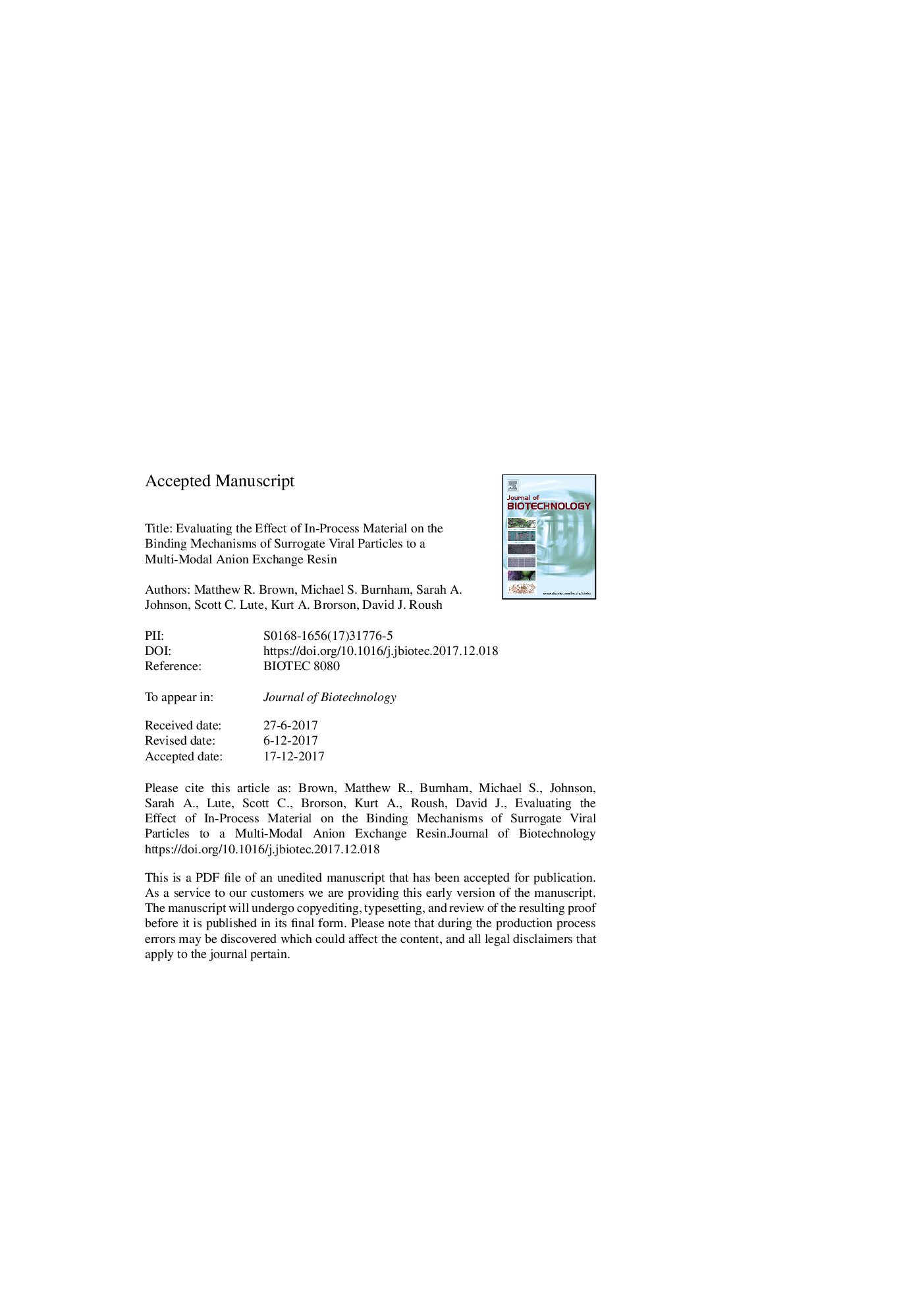| Article ID | Journal | Published Year | Pages | File Type |
|---|---|---|---|---|
| 6490373 | Journal of Biotechnology | 2018 | 25 Pages |
Abstract
Bacteriophage binding mechanisms to multi-modal anion exchange resin may include both anion exchange and hydrophobic interactions, or the mechanism can be dominated by a single moiety. However, previous studies have reported binding mechanisms defined for simple solutions containing only buffer and a surrogate viral spike (i.e. bacteriophage ΦX174, PR772, and PP7). We employed phage spiked in-process monoclonal antibody (mAb) pools to model binding under bioprocessing conditions. These experiments allow the individual contributions of the mAb, in-process impurities, and buffer composition on mechanistic removal of phages to be studied. PP7 and PR772 use synergetic binding by the positively charged quaternary amine and the hydrophobic aromatic phenyl group to bind multi-modal resin. ΦX174â²s binding mechanism remains inconclusive due to operating conditions.
Related Topics
Physical Sciences and Engineering
Chemical Engineering
Bioengineering
Authors
Matthew R. Brown, Michael S. Burnham, Sarah A. Johnson, Scott C. Lute, Kurt A. Brorson, David J. Roush,
